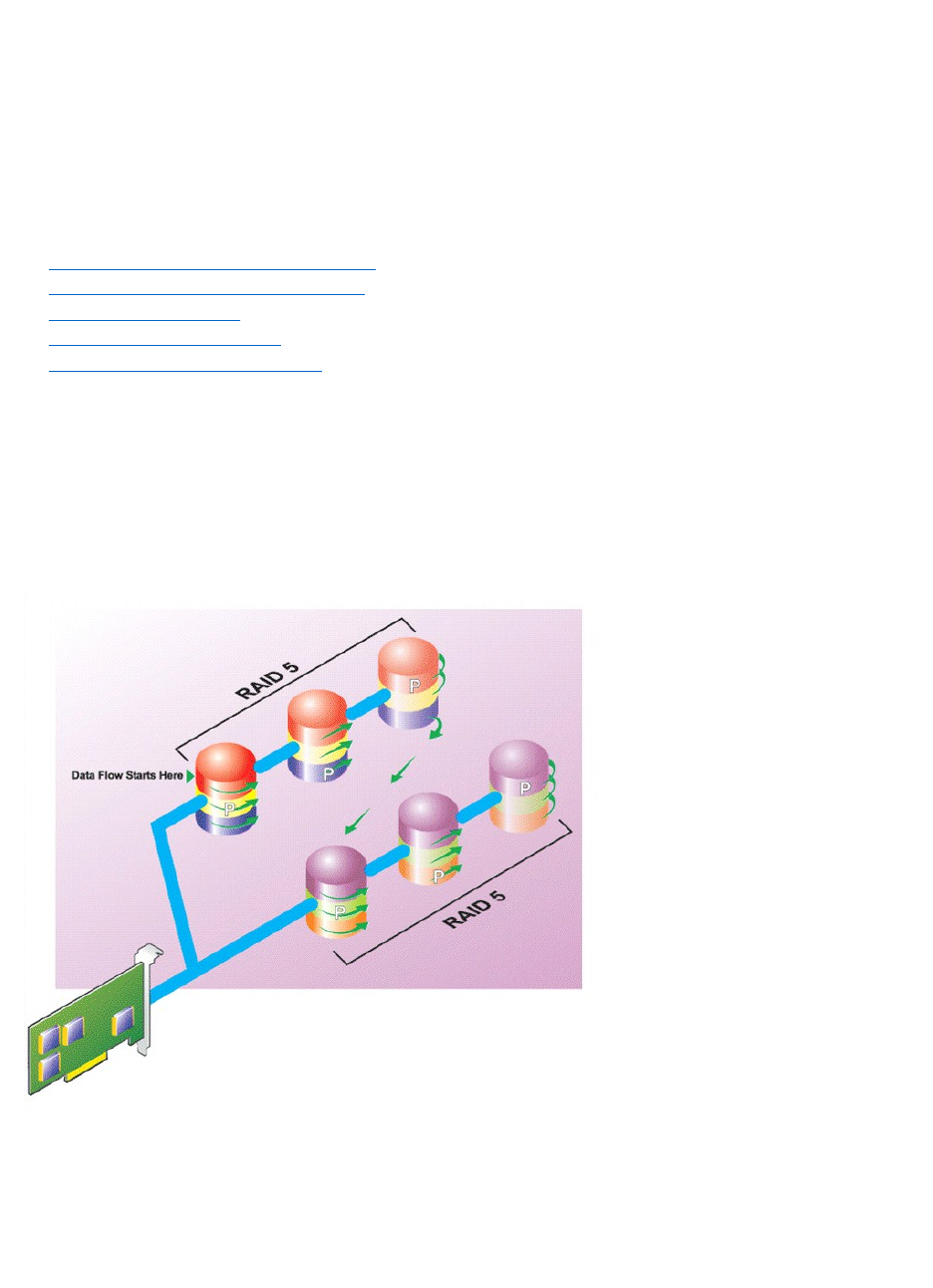User's Manual

RAID 6 Characteristics:
l Groups n disks as one large virtual disk with a capacity of (n-2) disks.
l Redundant information (parity) is alternately stored on all disks.
l The virtual disk remains functional with up to two disk failures. The data is reconstructed from the surviving disks.
l Better read performance, but slower write performance.
l Increased redundancy for protection of data.
l Two disks per span are required for parity. RAID 6 is more expensive in terms of disk space.
Related Information:
l Organizing Data Storage for Availability and Performance
l Comparing RAID Level and Concatenation Performance
l Controller-supported RAID Levels
l Number of Physical Disks per Virtual Disk
l Maximum Number of Virtual Disks per Controller
RAID Level 50 (Striping over RAID 5 sets)
RAID 50 is striping over more than one span of physical disks. For example, a RAID 5 disk group that is implemented with three physical disks and then
continues on with a disk group of three more physical disks would be a RAID 50.
It is possible to implement RAID 50 even when the hardware does not directly support it. In this case, you can implement more than one RAID 5 virtual disks
and then convert the RAID 5 disks to dynamic disks. You can then create a dynamic volume that is spanned across all RAID 5 virtual disks.
Figure 3-6. RAID 50
RAID 50 Characteristics:
l Groups n*s disks as one large virtual disk with a capacity of s*(n-1) disks, where s is the number of spans and n is the number of disks within each
span.
l Redundant information (parity) is alternately stored on all disks of each RAID 5 span.
l Better read performance, but slower write performance.










